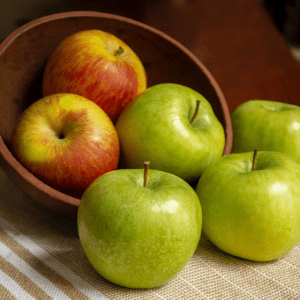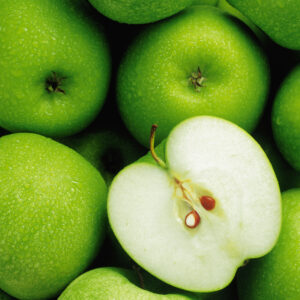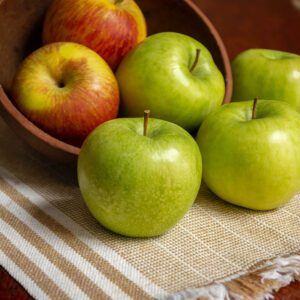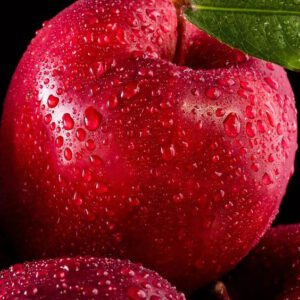PLUMS
The vitamin C in “Prunus domestica” helps your body heal, build muscle,blood vessels and your eyes
Product description
plum, any of various trees or shrubs in the genus Prunus (family Rosaceae) and their edible fruits. Plums are closely related to peaches and cherries and are widely eaten fresh as a dessert fruit, cooked as compote or jam, or baked in a variety of pastries. The European plum (P. domestica) and the Japanese plum (P. salicina) are grown commercially for their fruits, and a number of species, including the purple-leaf plum (P. cerasifera), are used as ornamental plants for their attractive flowers and leaves.
Trees of some plum species reach a height from 6 to 10 metres (20 to 33 feet), while others are much smaller; some species are small shrubs with drooping branches. The flower buds on most varieties are borne on short spurs or along the terminal shoots of the main branches. Each bud may contain from one to five flowers, two or three being most common, and often give an appearance of densely packed, showy flower clusters when the trees are in full bloom. Each flower features a hollow cuplike structure known as the hypanthium, which bears the sepals, petals, and stamens on the outer rim and surrounds a single pistil. After fertilization the hypanthium and its attachments fall off, leaving the ovary to develop into a drupe fruit. As the fruit grows, the outer part ripens into a fleshy juicy exterior, and the inner part forms the stone, or pit, which encloses the seed. The fruits show a wide range of size, flavour, colour, and texture. As trees come into bearing, they do not require much pruning and can be grown satisfactorily in a home fruit garden if diseases and pests are controlled.
Plums are widely cultivated throughout the world, and many varieties are adapted to a range of soils and climatic conditions. The common European plum (P. domestica) probably originated in the region around the Caucasus and the Caspian Sea and is at least 2,000 years old. Another Old World plum species, probably of European or Asiatic origin, is the Damson plum (P. insititia); ancient writings connect early cultivation of those plums with the region around Damascus. The Japanese plum was first domesticated in China thousands of years ago but was extensively developed in Japan; from there it was introduced to the rest of the world. Japanese plums have a longer shelf-life than most European varieties and are thus the most common fresh plum sold commercially.
Plums are a sweet summertime treat. The fruit is often used in baking and can be used to make jam, juice, and wine. Dried plums are called prunes and are also a delicious snack. But did you know that plums can be pickled? Check out more pleasant plum facts.
- Plums are the second most cultivated fruit in the world.
- The fruit is grown on every continent except Antarctica.
- Plums grow best in temperate areas.
- The fruit can grow in many colors such as purple, reddish purple, yellow, red, green, or white.
- The fruit grows on trees.
- Some trees can reach 20 to 33 feet tall.
- The trees blossom at different times in different places across the globe. In the United Kingdom, the trees blossom in early April. In Taiwan, the trees blossom in January.
- The European plum originated around 2,000 years ago near the Caspian Sea.
- The Japanese plum was first grown in China thousands of years ago. It was then developed in Japan and introduced to the rest of the world.
- It is unknown how many species of plum exist. Some say there are 19 species while others say there are 40 species.
- The most common varieties of plum are the Damson, Greengage, Yellowgage, Victoria plum, Satsuma plum, and Mirabelle plum.
- Mirabelle plums are grown in France.
- A large amount of the Damson plum is grown in Hungary.
- Plums are in season from May to early October.
- All parts of the fruit, except for the pit, are edible.
- The fruit is soften once picked.
- The fruit can be stored in the refrigerator for up to three days.
- Plums are related to apricots, peaches, apples, cherries, raspberries, pears, almonds, and strawberries.
- The color “plum” is named after the fruit.
- Plums symbolize good fortune in Chinese culture.
1. Plums can be as large as a baseball or a small as a cherry when ripe, all grown from the same tree.
2. When dried, plums are called prunes.
3. When a labor shortage hit California in 1905, a farmer turned to 500 monkeys to harvest the prune plums. The monkeys were organized into gangs of 50 with a human foreman. They were awesome at picking the plums but actually ended up eating all of them! Today, machines do the work without eating a single plum.
4. Plums are popular all over the world and plum trees are grown on every continent except Antarctica.
5. The color “plum” takes its name from the fruit. Plum colored plums are called purple plums and are a deep purple color, but there are reddish purple, yellow, red, green or even white plums, too.
6. Some plum varieties are specifically bred so that they can be dried and still retain their sweetness. These plums are used for prunes, known for their laxative effect.
7. The plum is part of the rose, or rosaceae, family, like the peach and the apricot. Most plums grown in the United States are hybrids from the Japanese plum and are grown in California.
8. Plums protect your heart. A medium fresh plum contains 113 mg of potassium that helps manage high blood pressure and reduce your risk of stroke.
9. Some studies suggest that plum extracts can kill aggressive breast cancer cells without harming the surrounding healthy cells. They are also full of antioxidants that have been shown to slow the development of Alzheimer’s disease.
10. There are only 43 calories in a 3.5 ounce plum.
Suppliers
- AURTRALIA
- FRANCE
- ITALY
- CHILE
- POLAND



